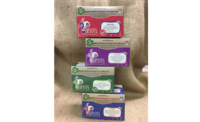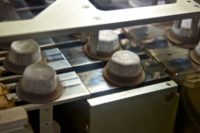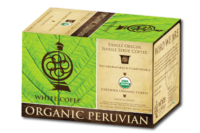According to Neil Kozarsky, president, Technical Help in Engineering and Marketing (T.H.E.M.), there are three main factors that are driving the single-serve packaging of liquids:
- Convenience, especially considering the increase in on-the-go lifestyles of consumers.
- Willingness to consume liquids from flexible packaging.
- Desire for coffee served at both hot and cold temperatures.
Also not to be dismissed is the benefit of portion control.
“No less than an entire new generation of single-serve packaging is required to meet the needs of mobile consumers who want to control (or) reduce portions and get consistently convenient and good functionality from packaging,” Kozarsky says.
T.H.E.M.’s roots date back to 1973 when it was founded as an innovative, integrated packaging solutions organization. It evolved in 1992 to focus more on flexible packaging and delivery systems. Around this time, T.H.E.M. became linked to the Ampac Preformed Spout Pak, which employed a proprietary dispensing design to eliminate the necessity of a fitment. This discovery eventually led to the company’s involvement in the development of stick packs.
Today, T.H.E.M. operates from its Marlton, New Jersey, headquarters and works as a contract packager with a number of converters.
As noted above, one of the biggest areas where T.H.E.M. is seeing growth when it comes to stick packs is in coffee. Specifically, the company currently has three single-serve packaging offerings for coffee applications – the Snapsil Semi-Rigid package, which features a snap opening function, the liquid flexible stick and pouch packaging.
“Coffee is an ideal application for sticks because each and every serving remains fresh until opening,” Kozarsky says. “The portion is controlled and some markets – Japan and Thailand, for example – have platformed what is called ‘3-in-1,’ which includes pre-blended coffee, creamer and sugar.”
Kozarsky says the U.S. market has yet to go to this 3-in-1 style, mostly due to the desire to customize coffee, but he states that a 2-in-1 serving may not be too far down the road.
“Sticks also offer the consumer a high-quality of coffee flavor – that element can’t be underestimated,” Kozarsky continues.
Stick packs have quickly become a viable packaging means for both dry and liquid applications, with coffee being the latest push. That’s not to say that pouches and bags still don’t have a role, but as Kozarsky states, it’s now easier to ask what can’t be packed in stick packs due to the advances in materials and filling techniques, rather than what can.
“Look for traditional condiments, sauces and dressings to evolve into stick format when brand owners need to raise the value proposition,” he says. “Look for more personal care and drug products to find their way into sticks as well. The value is portability, tamper evidence, controlled dosing and convenience. As always, cost is a major consideration and stick packs excel in this realm due to their efficient use of materials and excellent efficiencies in production.”
T.H.E.M.
(800) 322-8436
www.them.net




